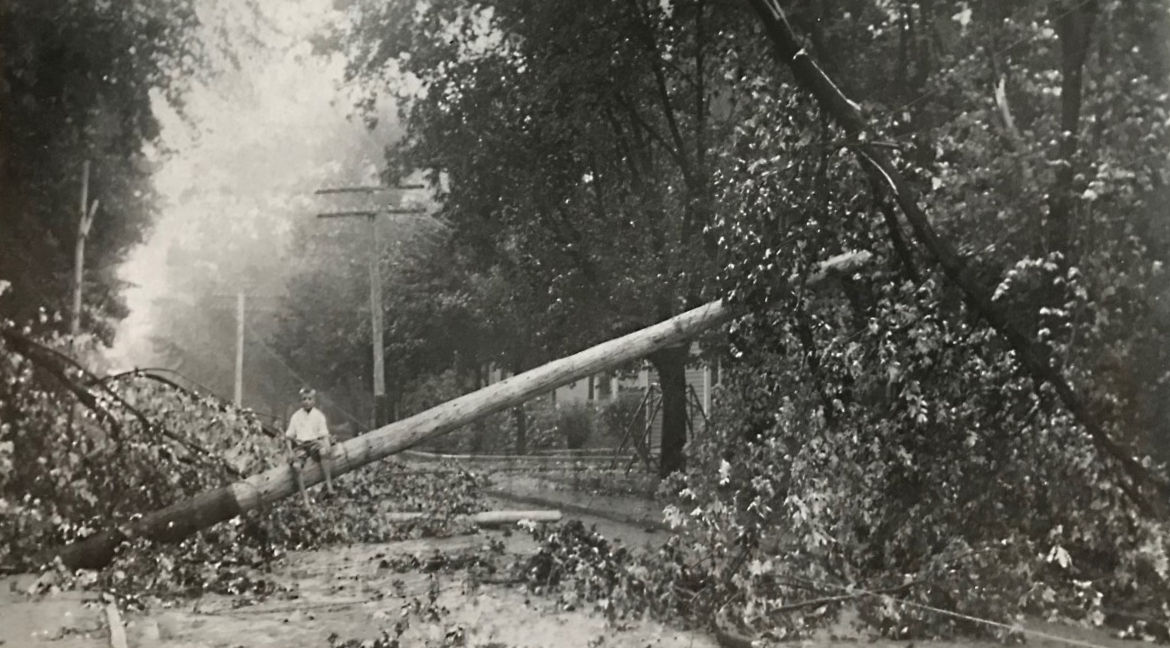All was calm and peaceful on the evening of June 18, 1911 … until quite suddenly it wasn’t. Local churches were preparing for evening services, and families were just sitting down to their meals when the sky suddenly darkened and foul weather began to beat its thunderous warning. But this would not be just any summer rainstorm.
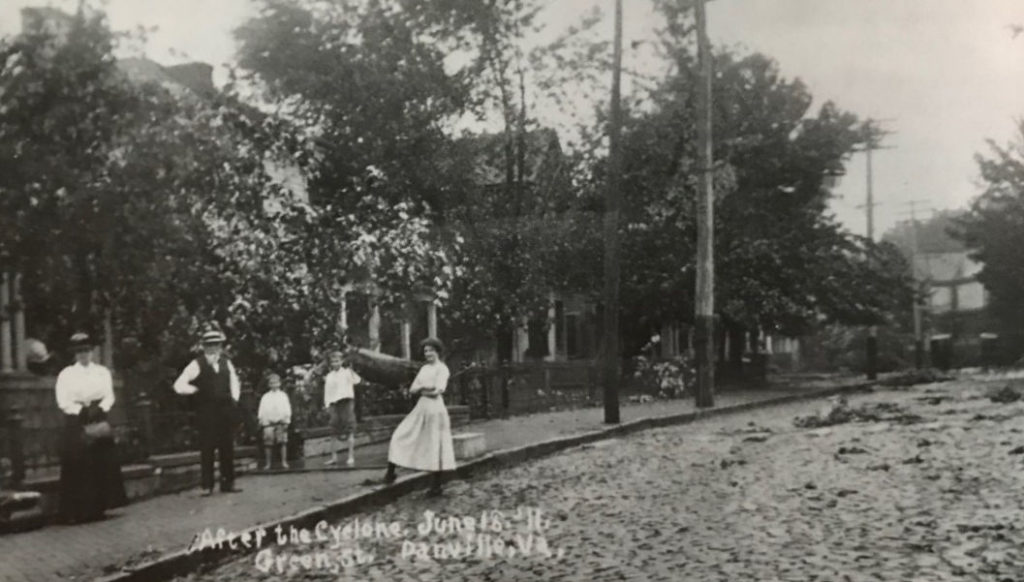
“The wind came from a black cloud that swept from west northwest over the city with little warning, the wind increasing in fury momentarily until its sweep and strain made houses tremble and terrified thousands of people. … Heavy downpour of rain, a terrific electrical disturbance, and some hail accompanied or followed the fury of the wind. It was the first visitation of this sort Danville has ever experienced, certainly in the memory of this generation.”
The storm first touched down at the ball field on the west side of town and there toppled the score board. It then swerved to the southeast where it swept along the riverfront, devastating mill buildings and warehouses in the textile and tobacco districts as it stripped them of their roofing. Upon reaching the residential area in the heart of the city, that which surrounded Sutherlin mansion, the wind kicked up to a furious pace, later calculated to have gusted at speeds up to 80 miles per hour, uprooting trees and shaking houses upon their foundations. Lightning struck several homes, setting them ablaze, but the torrential rains quickly doused the fires.
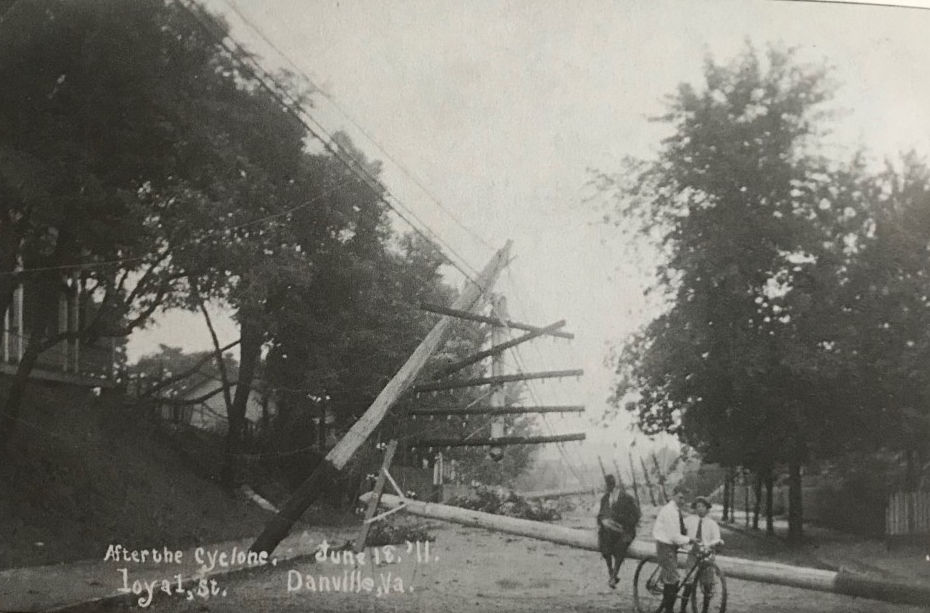
“Staunch and stable structures creaked and groaned and rocked beneath the fury of the whirling wind which threatened to overturn or demolish frame structures and did unroof many factories and large buildings…”
The textile sector was amongst the heaviest hit. The White Mill was struck by a bolt of lightning that ripped a gaping hole in the side of the building and tore part of the roof off. The Long Mill, which once stood on the north side of the river, was also partially unroofed. What damage was not wrought by the wind and the rain was caused by the sprinkler systems that were set off with the damage of the roofs.
In the tobacco district, several buildings suffered damage to their upper floors. Acree’s Warehouse at Craghead and Loyal streets was divested of its tower when the wind toppled it into the street and hurled bricks upon the sidewalk and pavement and onto nearby rooftops. The roof of the Dibrell Brothers was stripped completely off, and several other warehouses suffered roof damage as well.
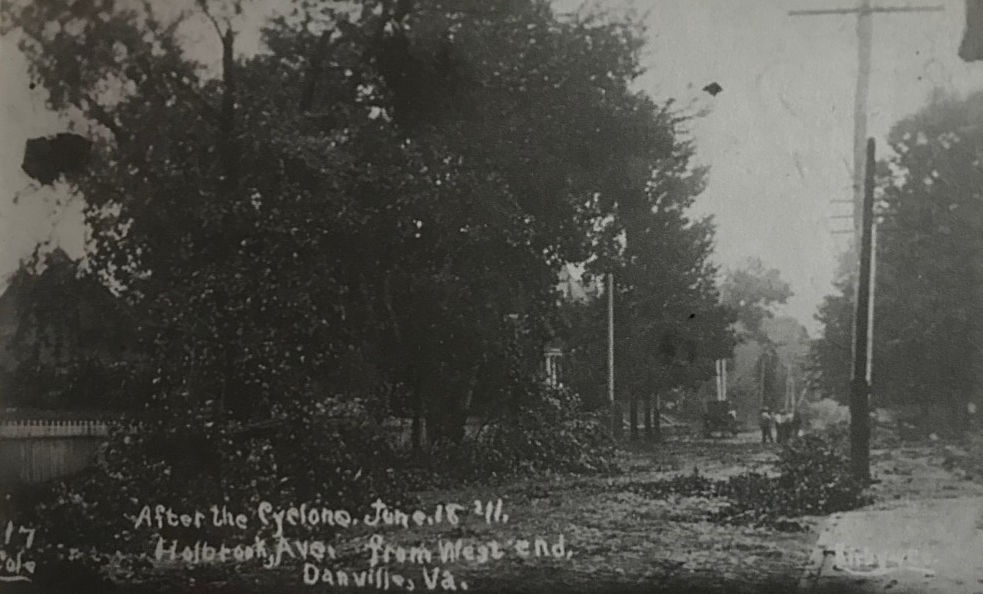
On “upper Main Street, the best residence section of the city, a broad paved thoroughfare shaded on both sides by great trees, many of them native oaks of great age and expansive shade, was a picture of desolation and confusion difficult to describe. From Jefferson Street to Holbrook Avenue, something like five blocks, the street is filled with the debris and broken branches and uprooted or prostrated trees, bearing down with them trolly telephone, electrical light wires and in some cases falling upon houses and porches.” The roads from Jefferson Street to Mount Vernon United Methodist Chruch was impassable due to the damage to trees which added to the chaos and left the local papers with the impression of a great tangled “spiderweb of wires and telephone poles”.
At the Burton, the storm removed a portion of the hotel’s roof that covered the hostelry annex toward the rear. A chimney was knocked down by the wind and sent hurtling through a skylight, barely missing guests and smashing a commode and sink to smithereens.
Of the businesses heaviest hit was Southern Bell. The toppling of trees made a mess of the electrical, telephone, and trolly lines. Western Union, the telegraph office, was entirely disabled. No messages could get in or out of the city. In the wake of the storm, the city was cast into darkness.
The storm was centralized over the city and caused little damage to neighboring areas. The damage was estimated at about $200,000 (over six million dollars by today’s standards).
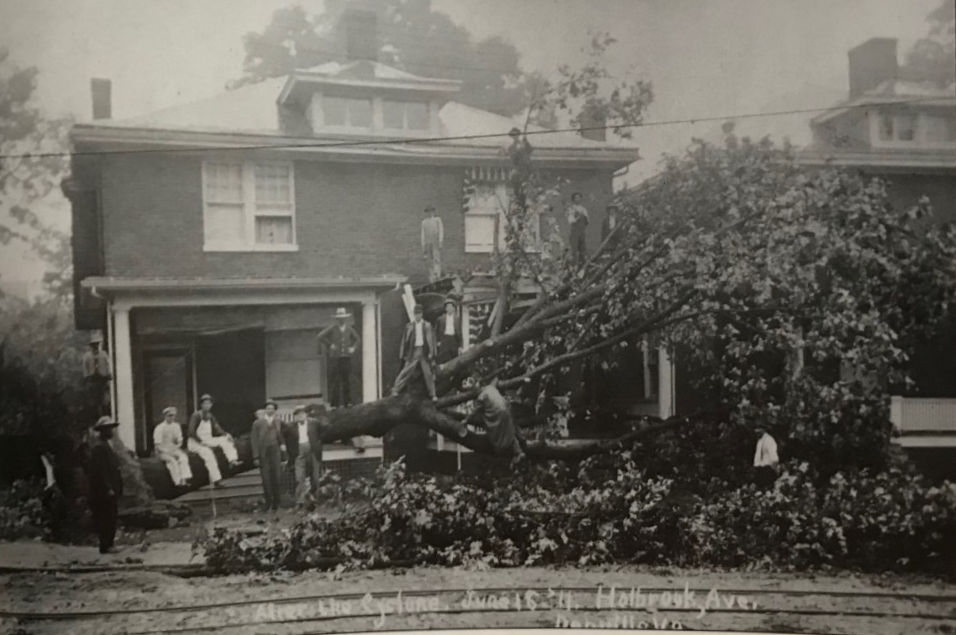
The morning after the storm, local photographer, Oliver W. Cole, with is camera in hand, stepped out of his residence at 134 Sutherlin Avenue for the purpose of recording the damage. He witnessed for himself, and later for those who wished to remember the event by way of collectible postcards he made of the images, the devastation described by the papers.
“A giant oak was uprooted and hurled against the porch of Mrs. Merriweather Lewis’ residence, Holbrook Ave, crushing the porch in,” according to one source. “At the residence of Dr. Mason on (152) West Main Street, the storm tore the porch off, carried it over the house and dumped it in the street.”
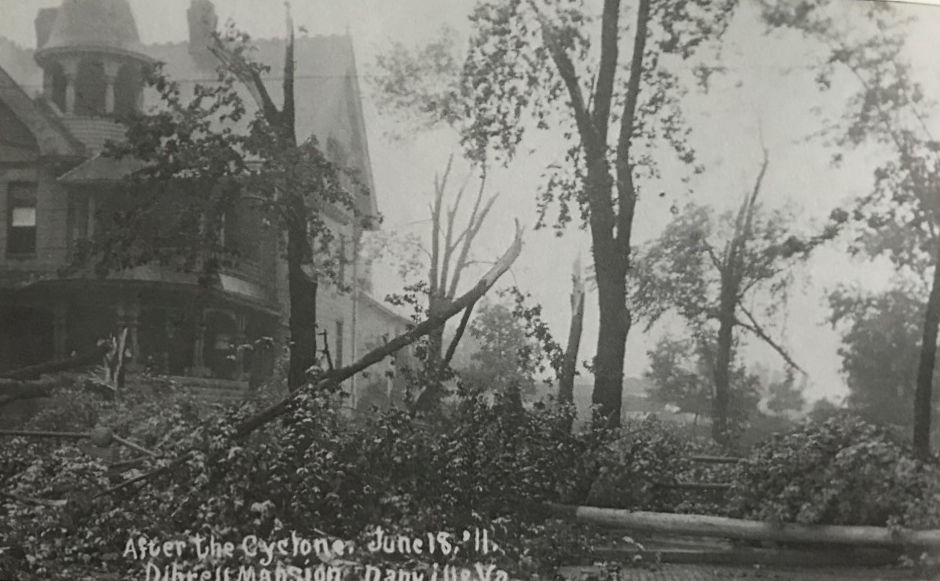
“The home of R.L. Dibrell suffered heavily, almost every one of the find trees in his spacious lawn being wrecked or stripped of limbs, leaving denuded trunks only,” the Danville Bee described the day after the incident. “Just across the street is the old Sutherlin Mansion, one of the picturesque and historic sights of the city, set in a grand old grove of primeval oaks, interspersed with a variety of transplanted ornamental trees and shrubs. This lot, occupying an entire square, was literally covered with debris of destroyed trees of every kind and presented a striking spectacle.”
Damages are almost universal, almost every house or premises sustaining some injury to chimneys, porches, roofs, eaves, fencing or flooding while the destruction of trees and shrubbery is amazing.”
For all the destruction wrought by the violent storm, however, not one life was lost. A week later, reported the papers, life in Danville was back to normal, and it was as if the storm had never happened. Storms of recent years have proven as this storm did that Danville is resilient, and so are its residents.
Sources:
Images found in the following publications:
Danville & Pittsylvania County Memories: A Photographic History of the 1800s through the 1930s, Danville Register and Bee, 2019
Images of America: Danville Revisited, Clara G. Fountain and Gary Grant, 2013
Postcard History Series: Danville, Virginia, Clara Garrett Fountain, 2000
Textual information and quotations provided by various Virginia Newspapers archived and curated at GenealogyBank.com
and River City: Stories of Danville, Adrian O’Connor, published by Danville Register and Bee, 1993
